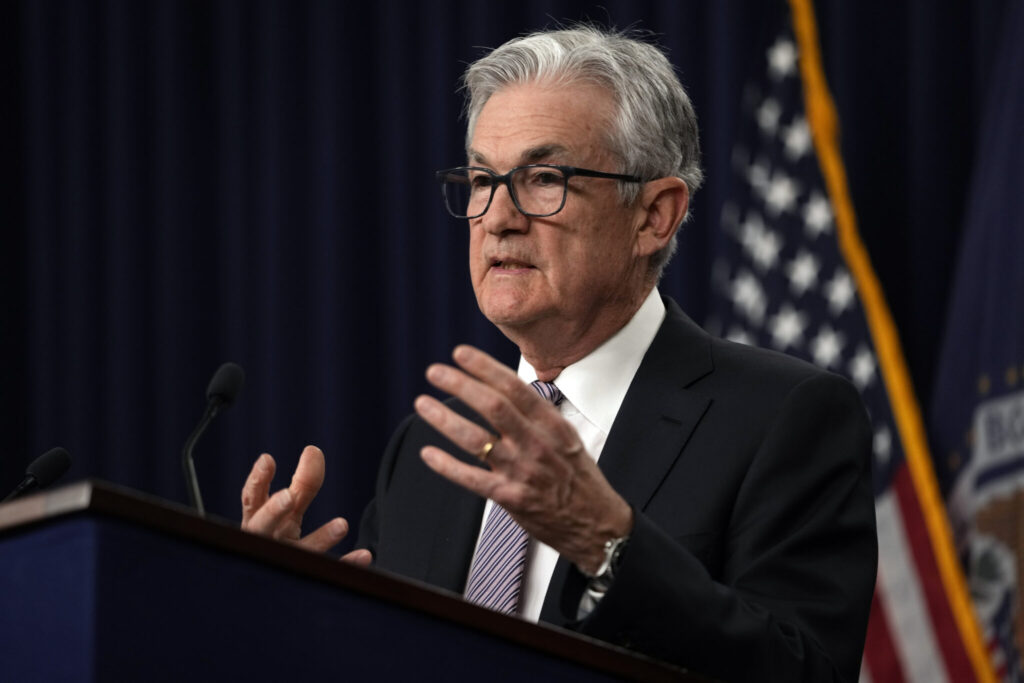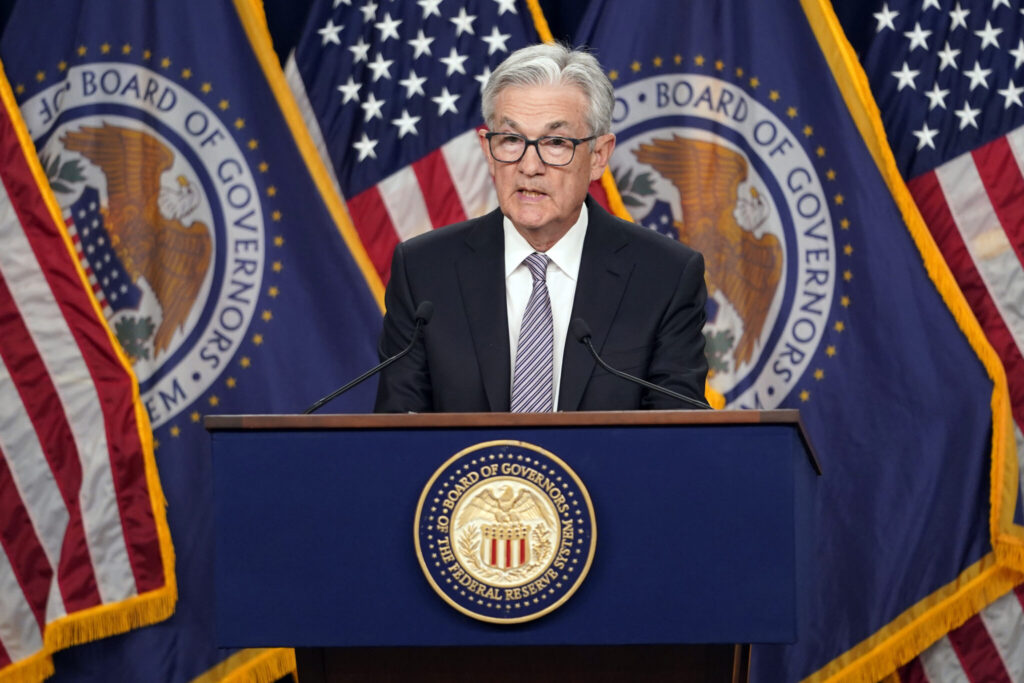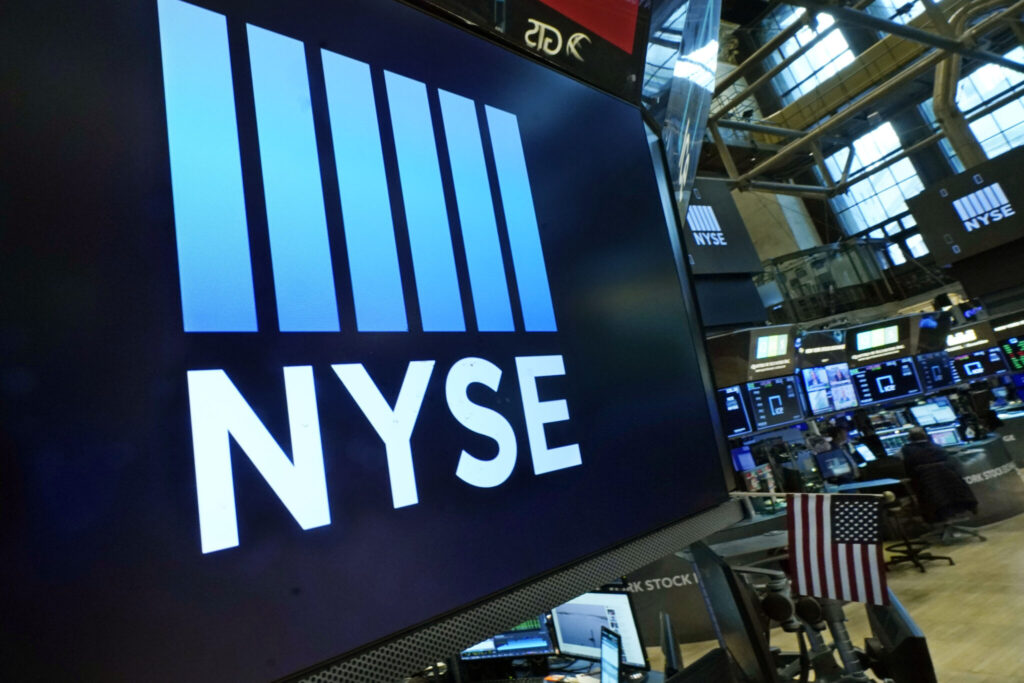The calm that has prevailed in the U.S. equity market may be starting to snap, as a range of worries bolster the case for investors looking to take profits on a rally that has seen the S&P 500 gain more than 7% this year. For weeks, U.S. stocks have edged higher while measures of market volatility slid, despite concerns including uncertainty over the health of regional banks, a nearing deadline to raise the U.S. debt ceiling and worries over the impact of the Federal Reserve’s aggressive monetary policy. The Associated Press has the story:
Stock Markets steady after Fed’s rate hike
Newslooks- NEW YORK (AP)
Stocks are holding relatively steady Wednesday following the Federal Reserve’s latest hike to interest rates.
The S&P 500 was up 0.4% in afternoon trading, a touch higher than it was before the Fed’s announcement. The Dow Jones Industrial Average was up 40 points, or 0.1%, at 33,724, as of 2:20 p.m. Eastern time, while the Nasdaq composite was 0.7% higher.
The move was widely expected, and it’s supposed to slow the economy further in hopes of getting inflation under control. The hope on Wall Street is that this is the final increase following the Fed’s fastest flurry in decades. The central bank may have given a nod toward the possibility in its statement, where it dropped a reference saying it “anticipates that some additional policy firming may be appropriate.”
But it stopped short of declaring the end to rate hikes, which have already caused cracks in the U.S. banking system and sent stock prices well below their record heights. Its next meeting is next month.
“Inflation is trending in the right direction, but progress has been bumpy,” said Whitney Watson, global co-head and co-chief investment officer of fixed income and liquidity solutions at Goldman Sachs Asset Management. “A pause in rate actions is therefore appropriate, but further tightening is plausible should inflation prove sticky.”

Inflation remains well above the Fed’s 2% target, and it’s still hurting households trying to keep up. Lower-income households have been squeezed particularly hard. At the same time, high rates have also sharply raised worries about a recession hitting later this year because they act like a blunt hammer hitting the entire economy.
The banking system is feeling some of the fiercest pressure of high rates, and three of the four largest U.S. bank failures in history have come within the last two months. Investors have been hunting for other potential weak links, with the harshest scrutiny on small- and medium-sized banks that could see a sudden exodus of customers.
Shares of PacWest Bancorp, Western Alliance Bancorp and other rivals were rising Wednesday, a day after seeing trading of their stocks get halted amid steep slides. PacWest rose 3.3%, and Western Alliance gained 2.1%.
Eli Lilly was a big factor lifting the market, and it rose 6.8% after reporting encouraging results from a study of a treatment for Alzheimer’s disease.
Some of the market’s sharpest action was among companies reporting their results for the first three months of the year.
Kraft Heinz rallied 3.7% after beating analysts’ forecasts for profit and revenue. Online dating company Match Group rose 2.2% after topping profit expectations.

The majority of companies have been turning in better profits than feared so far. But expectations coming into this reporting season were low given the effects of much higher interest rates and a slowing economy. S&P 500 companies are still likely on the way to reporting a second straight quarter of profit drops.
That’s why much attention has been on what companies say about upcoming trends.
Advanced Micro Devices fell 8.4% despite reporting stronger profit and revenue than expected. It gave a forecast for revenue in the current quarter that fell short of some analysts’ expectations.
Oil prices were sliding amid worries about how much fuel a slowing global economy will burn. Benchmark U.S. crude oil fell 4.2% to $68.70 per barrel and is only a few dollars above its lowest point since late 2021.
Brent crude, the international standard, was down 3.4% at $72.78 per barrel. That sent energy stocks to the sharpest loss by far among the 11 sectors that make up the S&P 500. Devon Energy fell 2%, and Diamondback Energy dropped 3.5%.
Reports on Wednesday, though, offered some potentially encouraging data on the U.S. economy. Growth in U.S. services industries accelerated last month by a bit more than expected, according to the Institute for Supply Management.
A separate report also suggested the job market may be in better shape than expected. ADP said hiring among private employers accelerated much more last month than forecast. It could raise expectations for the federal government’s more comprehensive report on hiring, which will arrive Friday.
The job market has been one of the strongest pillars supporting the economy recently, though some mixed data recently has suggested it may be softening. On one hand, the Fed sees that as helpful in bringing inflation closer to its goal of 2%. On the other, though, a drop-off would sharply raise the risk of a recession.
In the bond market, the yield on the 10-year Treasury fell to 3.39% from 3.44% late Tuesday. It helps set rates for mortgages and other important loans.
The two-year yield, which moves more on expectations for the Fed, fell to 3.95% from 3.99%.







